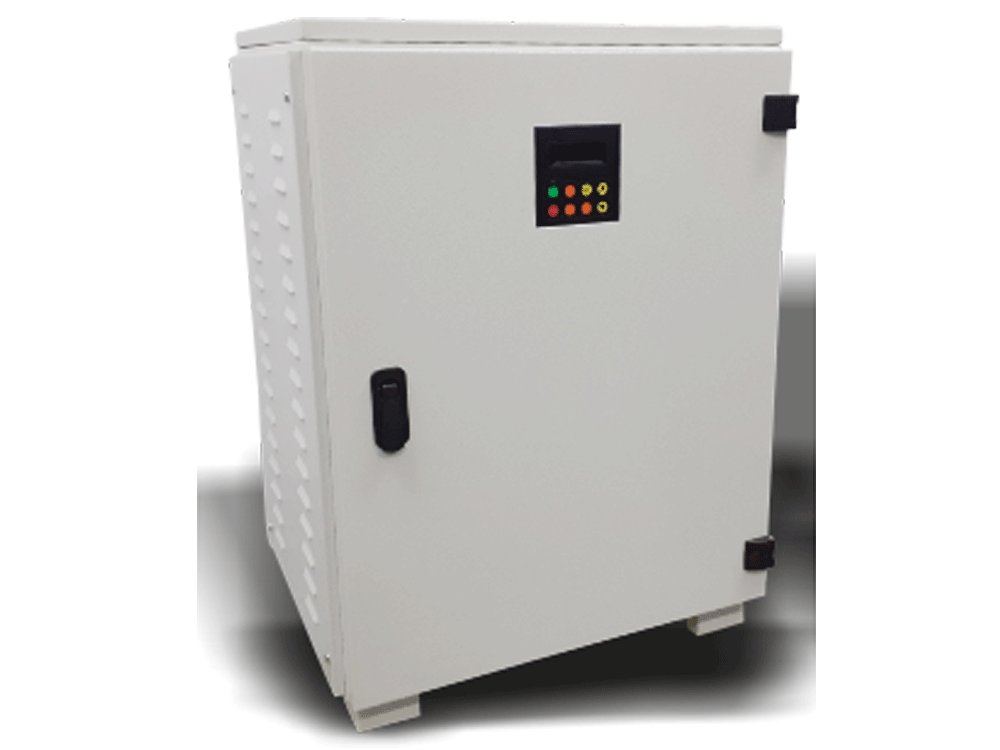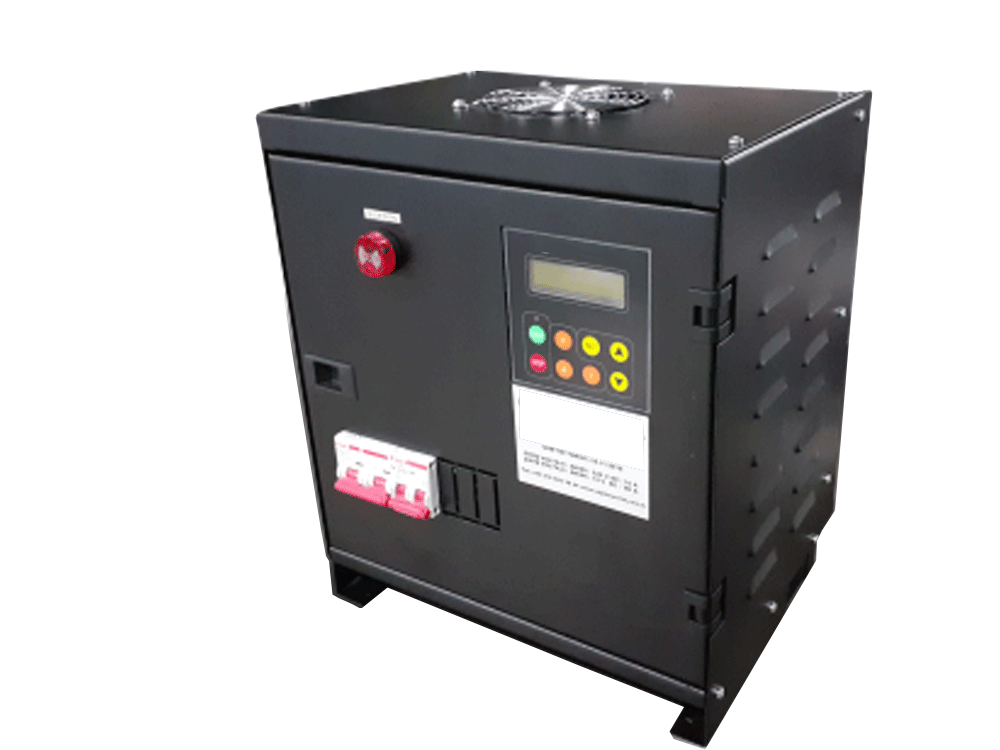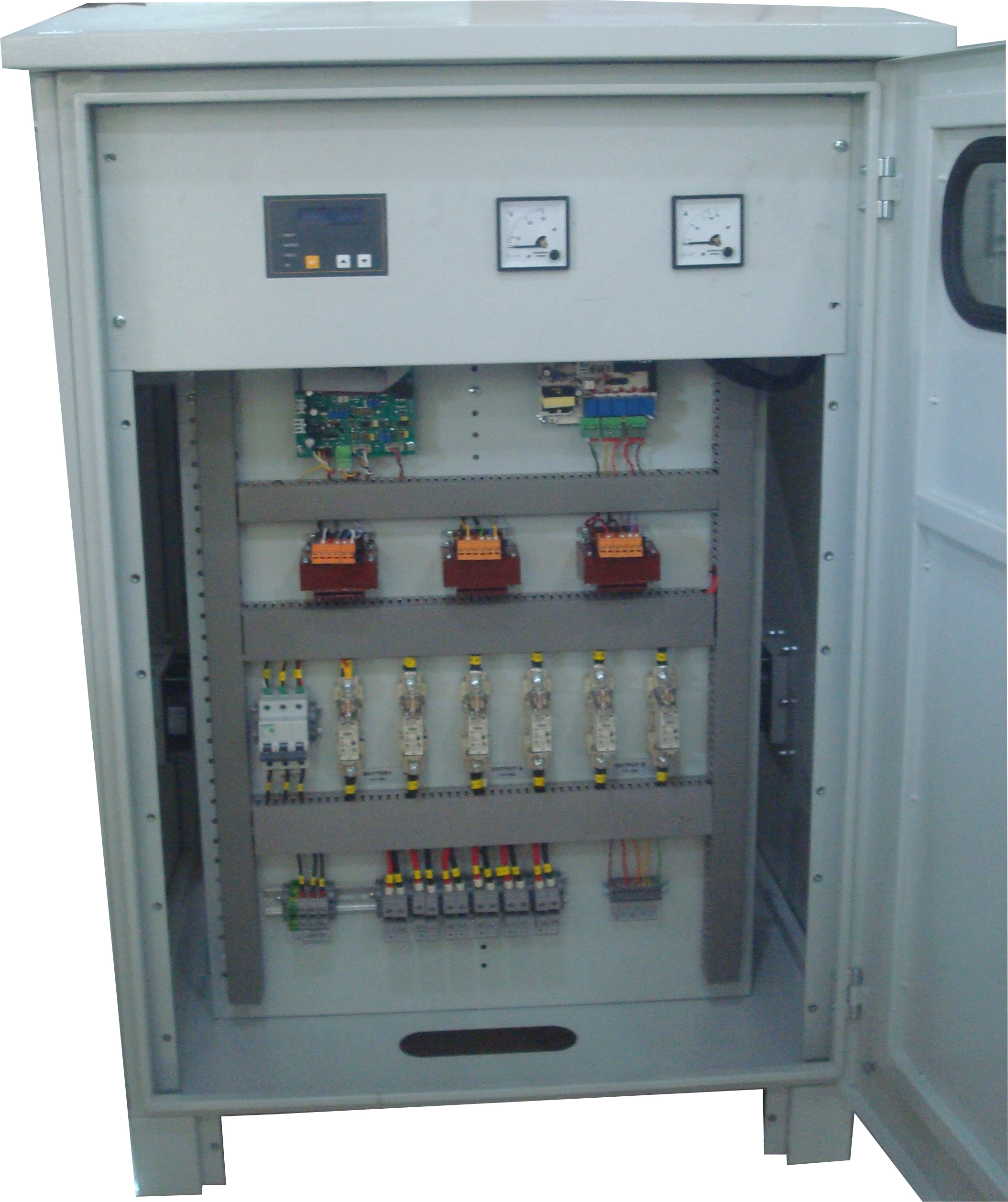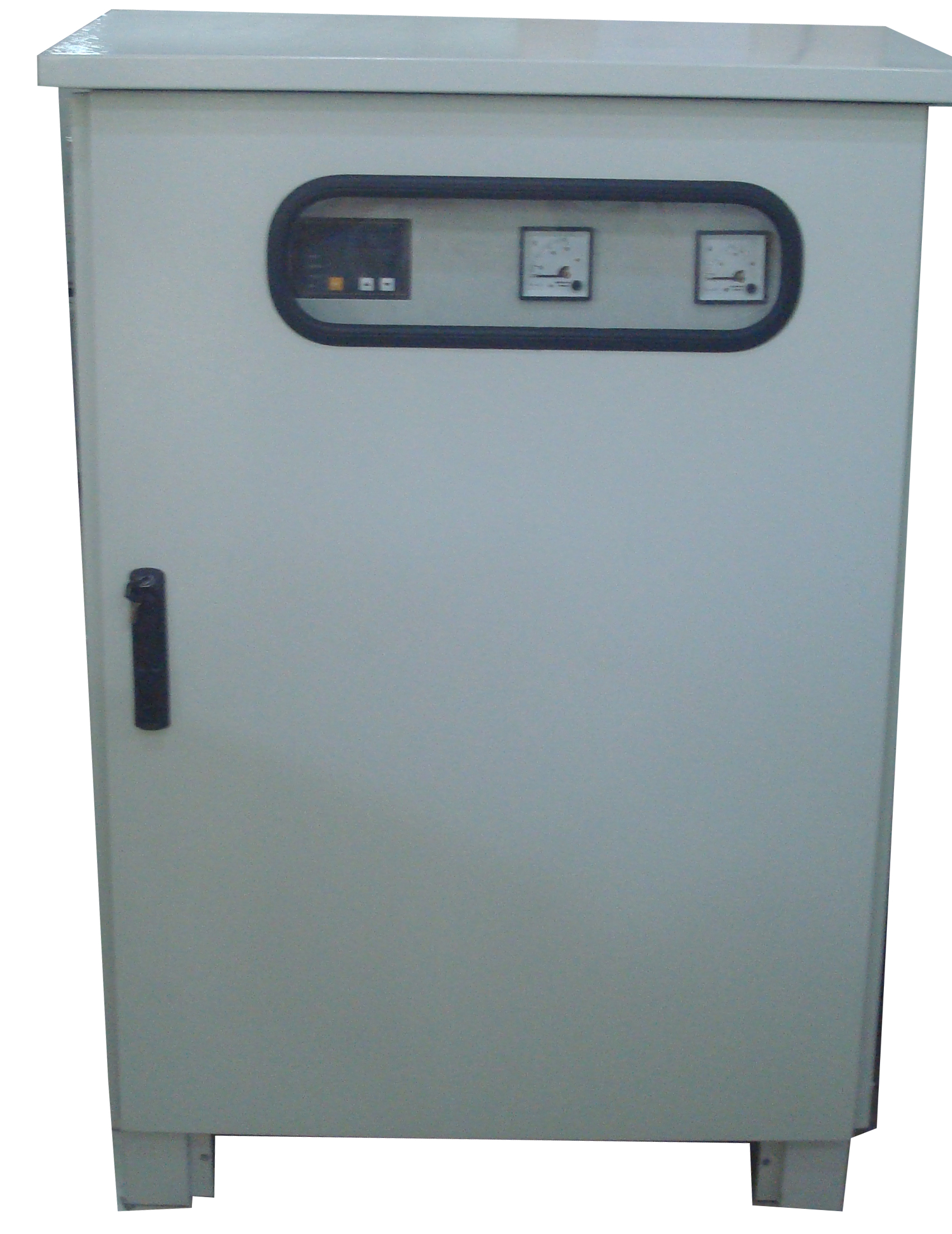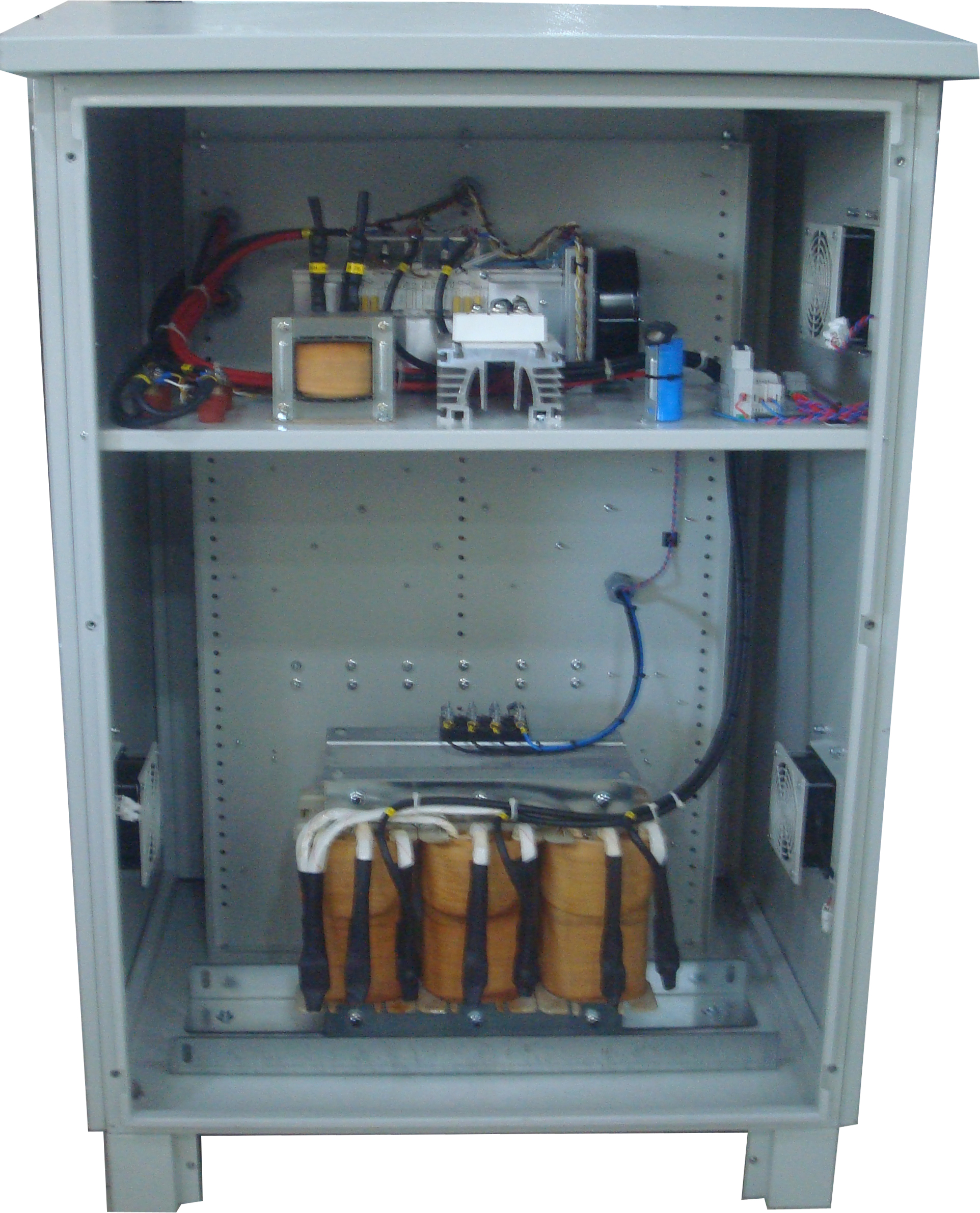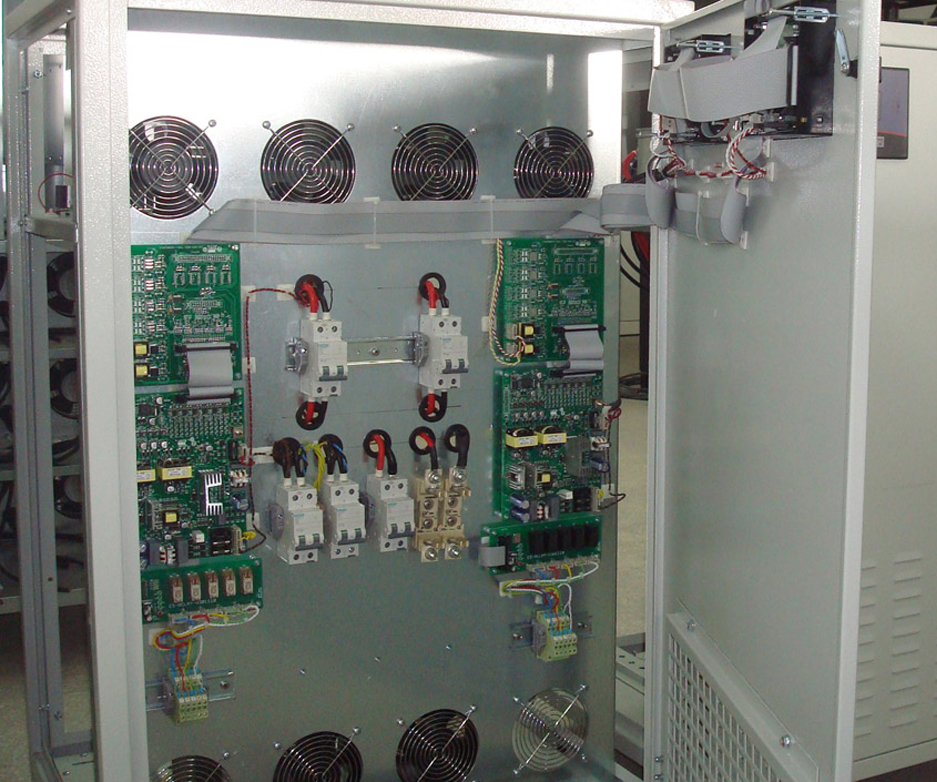Battery Charger Rectifier
| MAINS INPUT | |
| Input Voltage | 220/230 VAC - 380 VAC / 400 VAC (Special Design Optional) |
| Voltage Tolerance | ±10% |
| Input Frequency | 50-60 Hz |
| Protection | Termal -MAGNETİC & W.Insurance |
| Power factor | >0,8 |
| RECTIFIER OUTPUT | |
| Output Voltage | 6 VDC / 24 VDC / 48 VDC/ 110 VDC / 220 VDC / 400 VDC |
| Charge Voltage Setting | 100% Digital Adjustable |
| Quick Charger Voltage | Nominal Of Charge Voltage 100% - 120% Between Digital Adjustable |
| Static Tolerance | 1% |
| Output Current Setting | 0-100% between digital adjustable |
| Outpput Ripple | Low output voltage than 5(Rms AC)(1% optional) |
| Output Protection (standard) | Over current / High heat /short curcuit/High Voltage |
| Output Protection (optional) | Dc Leakage / Dc High / Dc Low / Touch Screen |
| CONTROL PANEL | |
| Measurements | Lcd Screen/ Display Voltage And Current Display Time (Touch Screen Optional) |
| Warning Light | Quick Charge/ Normal Charge/ Flux Control/ Volt Control/ Rectifier Activated |
| Methot of charging | Quick Charger Buffer (Or Desired Charging System) |
| Power Suppy | 0-100 Adjustible Voltage And Current Control (Optional) |
| Button | Touch Screen Program keys |
| GENERAL | |
| Quick Charging Time | Digital Adjustable |
| Cooling | With Internal Fan |
| Isolation Voltage | 3750 Vac Output Output Terminal |
| Efficiency | 95% At Full Load |
| Input / Output Connections | Screwed Introduction Output Terminal |
| Circuit Breaker | For Introduction And Battery 2 Pcs 2 Pole Thermal Magnetic Or |
| Protection Class / Color | W - Auto Insurance (Load Insurance Optional) |
| Operating Technique | Thyristor Technology |
| Protection Class / Color | IP 20 (IP 32 Optional) - RAL 7032 |
| WARNING CONTACTS | |
| Audible Warning | Fail Audible Warning (Optional) |
| Rectifier Error | High DC / DC Low / Out Fail / Excessive Heat / Mains Off / |
| Output Short Circuit (Optional) | |
| Battery Low | Battery Deep Discharge Protection (Optional) |
| ENVIRONMENTAL | |
| Operating Temperature | -20 C/ 70 C |
| Relative Humidity | 90% |
| Acoustic Level | <60 dB (1 M) |
| Work Height | <2000 M |
| Electrical Standards | ISO 9001 - TSE HYB - LVD - EN 62040-1 - 1 (Safety Rules) - EMC |
| DIMENSIONS | Height Depth Widht |
| Three-Phase | 29 / 34 / 40 25,5 / 28 / 32 37 / 40 / 45 |
| Mono-Phase | 50 / 53 / 58 50 / 53 / 58 39 / 39 / 44 |
Transformer battery charger is designed to meet battery charging needs in different industries. The
device works with thyristor controlled by microprocessor. The thyristor, which carries current in one
direction, is a semiconductor circuit switching element. Microprocessor controlled thyristors can
control device current and voltage characteristics
Many transportation vehicles we use today work with batteries. These batteries in the vehicles need
to be charged at regular intervals. STA series charging rectifier provides direct current and voltage
values to charge these batteries. Different charging methods and values can be used during the
charging process.
The battery charger with transformer can perform the charging process with a constant or adjustable
current output. In addition, current-controlled or voltage-controlled operation can be provided by
controlling with a microprocessor. Thyristor controlled battery chargers are widely preferred in
different industries as they offer suitable values for different battery types.
The products in the transformer group aim to meet different needs with 6 and 12 pulse options. The
12-pulse option uses two different 6-pulse rectifiers. Thanks to the thyristor, the device is controlled
quickly. Quick control ensures that sudden voltage and current changes that may occur in the mains
are quickly balanced.
Technical information
STA series charging rectifiers can be 220V single-phase or 3 x 400V three-phase. Options with 12
pulses are applied as three-phase. Output current values and output voltage values of the rectifier
are fully adjustable. The output current can start from 1A and reach up to 1000A. The output voltage
value can start from 2V DC and reach up to 1000V DC.
The battery charger has standard protection features that protect both the battery and the rectifier.
Thyristor battery charger has protection against reverse connection. It also provides protection
against deep discharge that may occur in the battery and cause permanent damage to the battery.
Another protection in the device is overheating protection. Diodes and thyristors in the rectifier are
protected against overheating.
The cooling of the device is provided by air. Air cooling is provided by the internal fan in the device.
IP20 – RAL 7032 protection class, specially produced for the rectifier. It is possible to reach 98%
efficiency level by choosing the right battery charger. In general, the device operates in the 90-98%
efficiency range.
A high efficiency transformer is used. Glass-insulated aluminum windings are used as standard. On
request, transformer windings can also be produced in copper.
General feature
When we look at the general features, the transformer battery charger has similar features with
other rectifier models. Audible and illuminated warning lights help both to detect the malfunction of
the device and to ensure operational safety. In addition, these alarms are important in terms of
occupational safety.
On the other hand, when necessary, the device can also be used as a DC power source. Thanks to the
dual function, both DC power supply and battery charger are obtained in one device. Transformer
battery charge rectifier prices are not affected by the general features of the device. Prices are often
affected by optional features or custom design applications.
Another useful feature of the rectifier is that it shows whether the battery is connected or not. It
does not start working by giving a warning when the battery is not connected. In this way, the
damage caused by empty working can be prevented.
Thyristor battery charging rectifier models can operate at different input voltage values. It can also
operate at different frequencies between 50 Hz and 60 Hz. Another useful feature is that the device
turns off at the end of the charging process. Thus, it is possible to save energy.
Considers high efficiency and optimal working conditions in all transformer battery charger models.
In this way, current and voltage losses that may occur during battery charging processes are
prevented.

